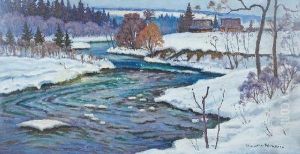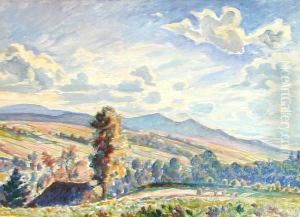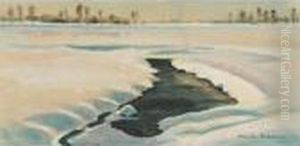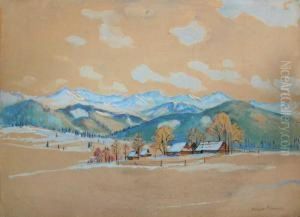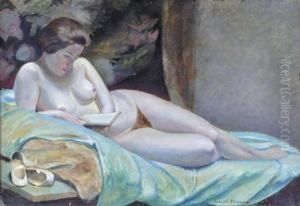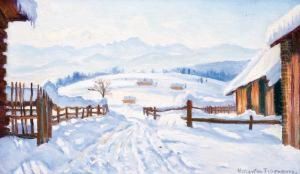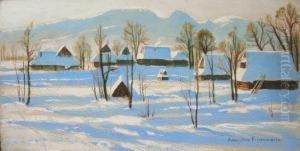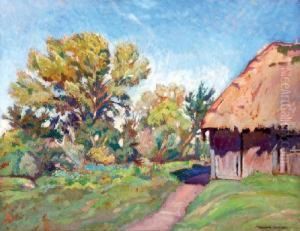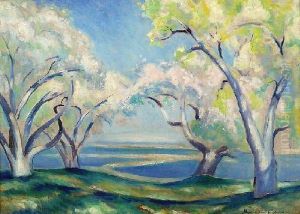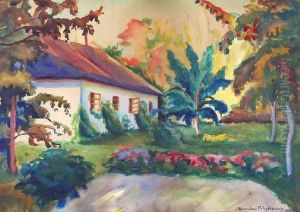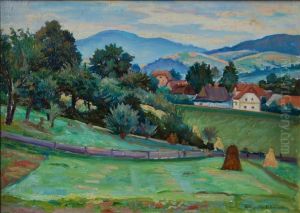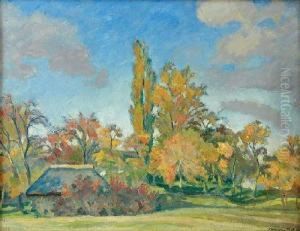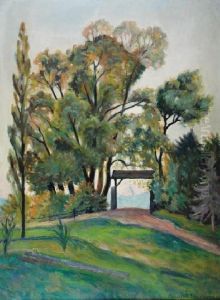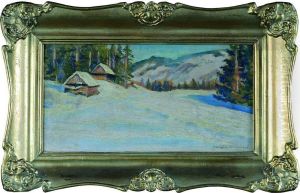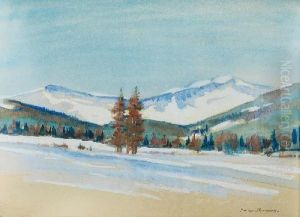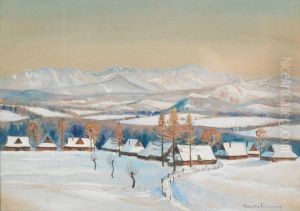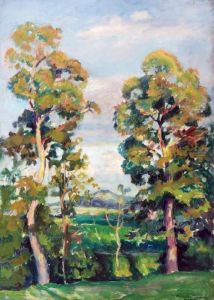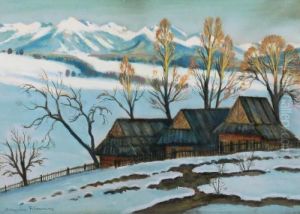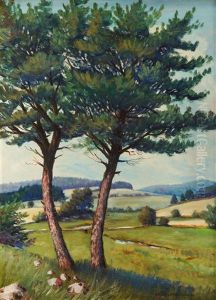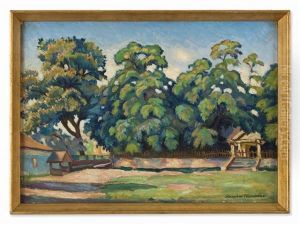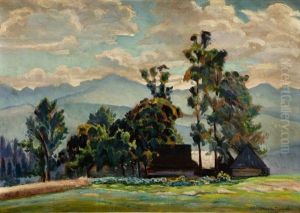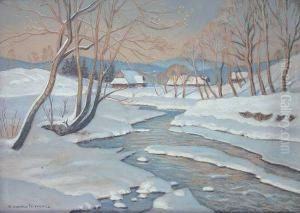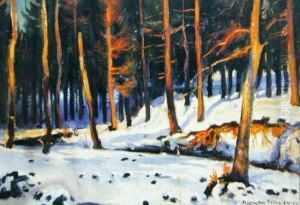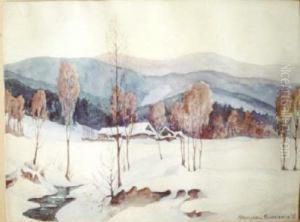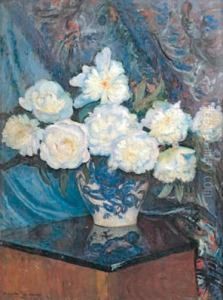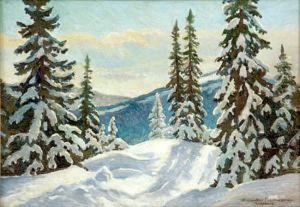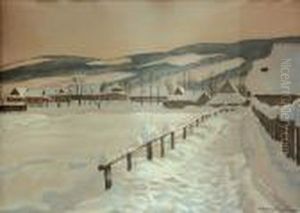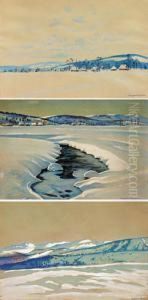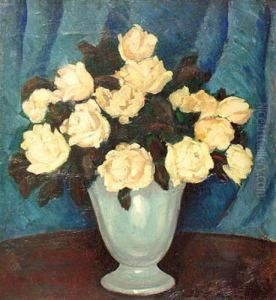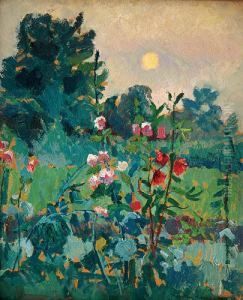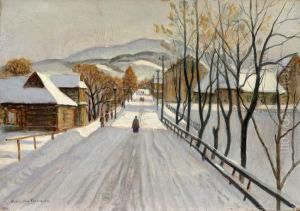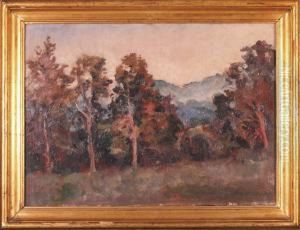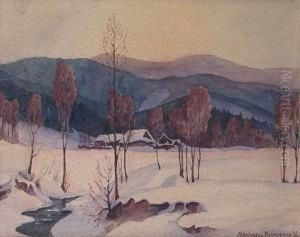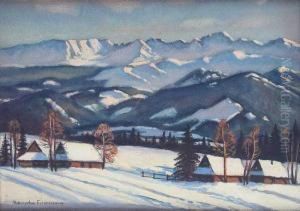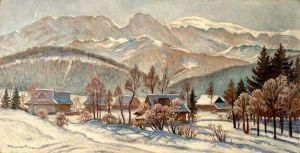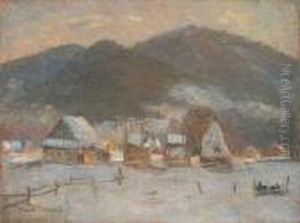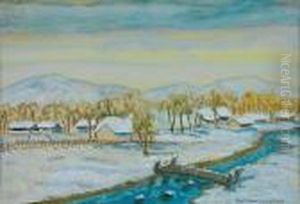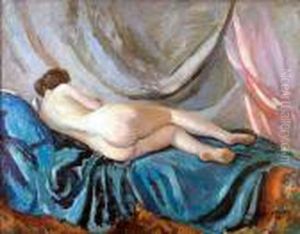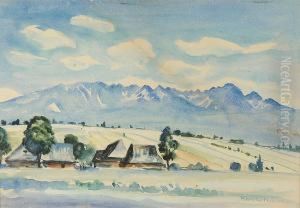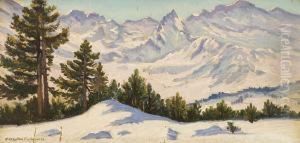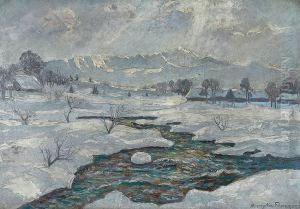Mieczyslaw Filipkiewicz Paintings
Mieczyslaw Filipkiewicz was a Polish painter and graphic artist, born in 1907 in Krakow, which at that time was under the Austro-Hungarian Empire and now is a part of Poland. Filipkiewicz's early life and education were deeply rooted in the rich cultural atmosphere of Krakow, a city known for its artistic and intellectual heritage. He studied at the Academy of Fine Arts in Krakow under professors such as Józef Mehoffer and Władysław Jarocki, who were significant figures in Polish art history.
Filipkiewicz's work was influenced by the Polish colorism movement, characterized by vivid colors and dynamic brushwork. He developed his unique style, focusing on landscapes, portraits, and genre scenes that often depicted the Polish countryside and the Tatra Mountains. His paintings exhibited a strong sense of nationalism, which was particularly resonant during the interwar period when Poland had regained its independence after years of partitions.
During World War II, Filipkiewicz faced challenges due to the political climate. His nationalistic tendencies and the expression of Polish identity in his work were not in favor under the German occupation. After the war, Poland fell under Soviet influence, and the communist regime imposed strict controls over artistic expression. Filipkiewicz, like many artists of his time, struggled with the limitations on artistic freedom.
Despite the political turmoil, Filipkiewicz continued to paint and exhibit his work. However, his career was cut short when he passed away prematurely in 1953. Mieczyslaw Filipkiewicz's contributions to Polish art were significant, and his works are part of Poland's national cultural heritage. They can be found in various museums and collections throughout the country. His life and art reflect the turbulent history of Poland in the first half of the 20th century and the resilience of Polish artists during this period.
